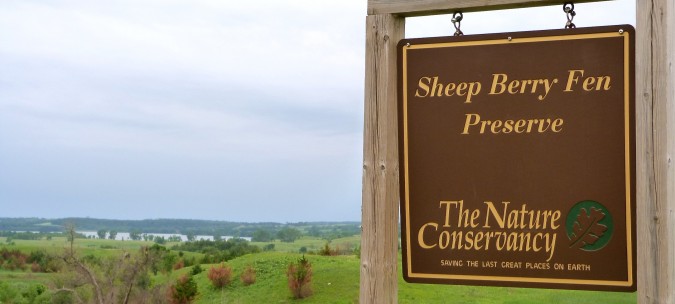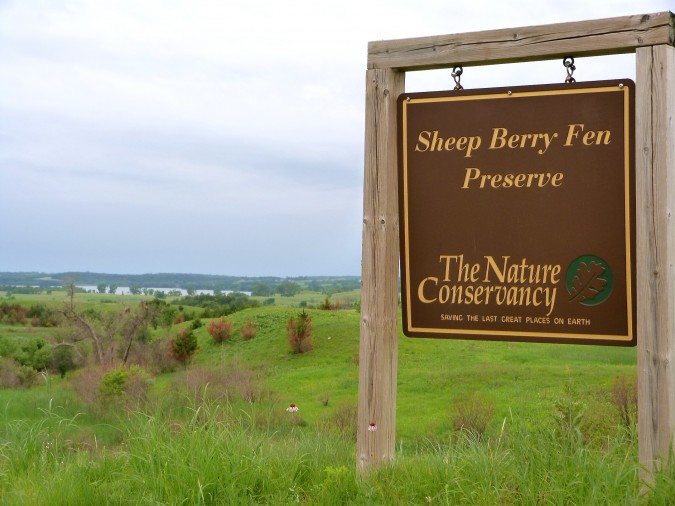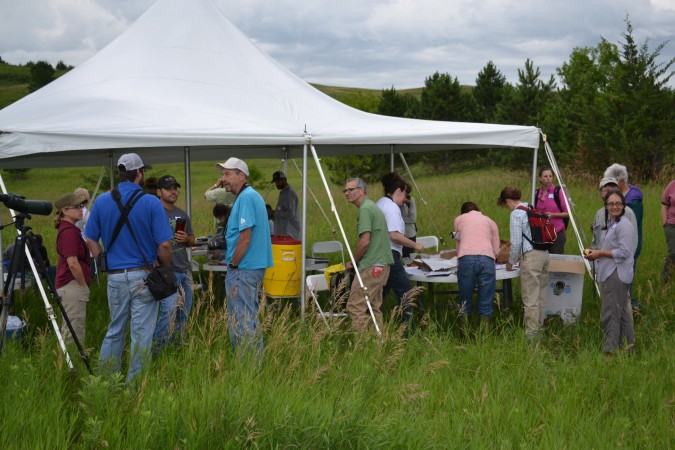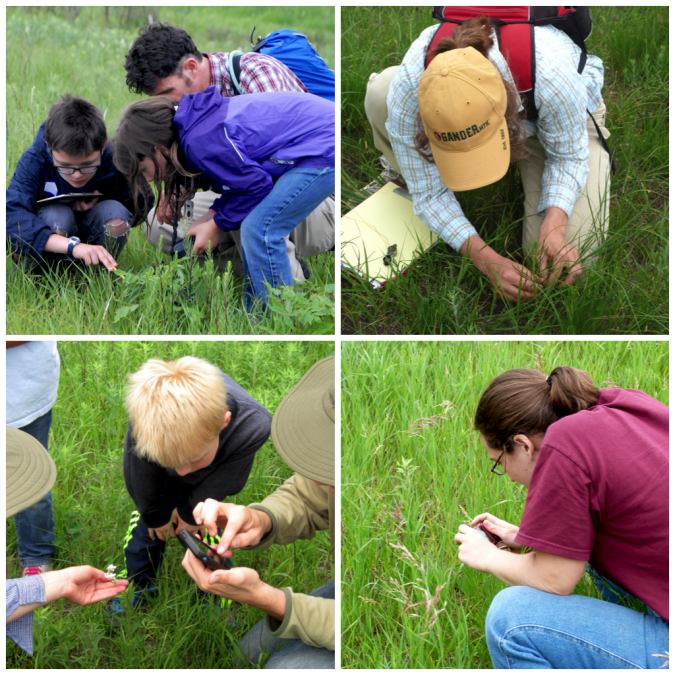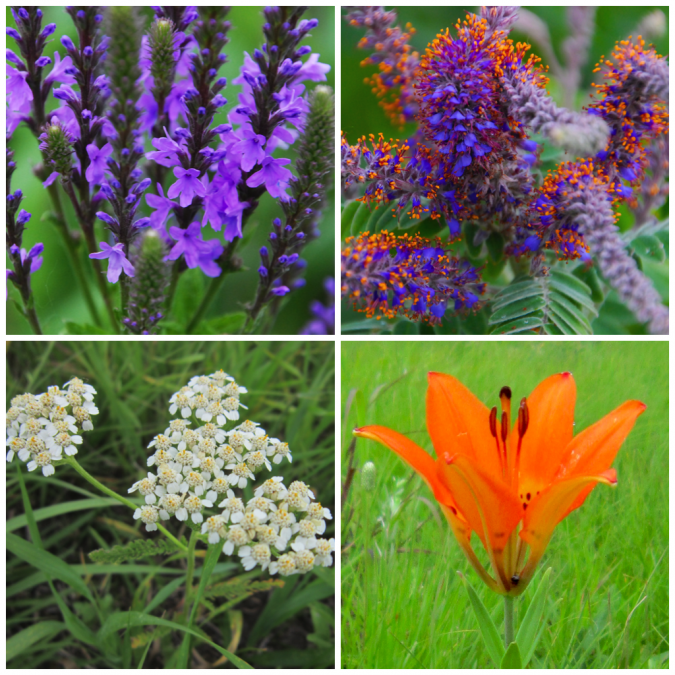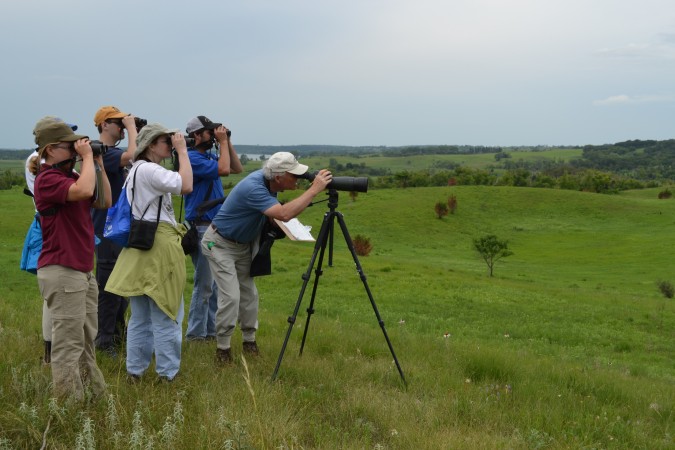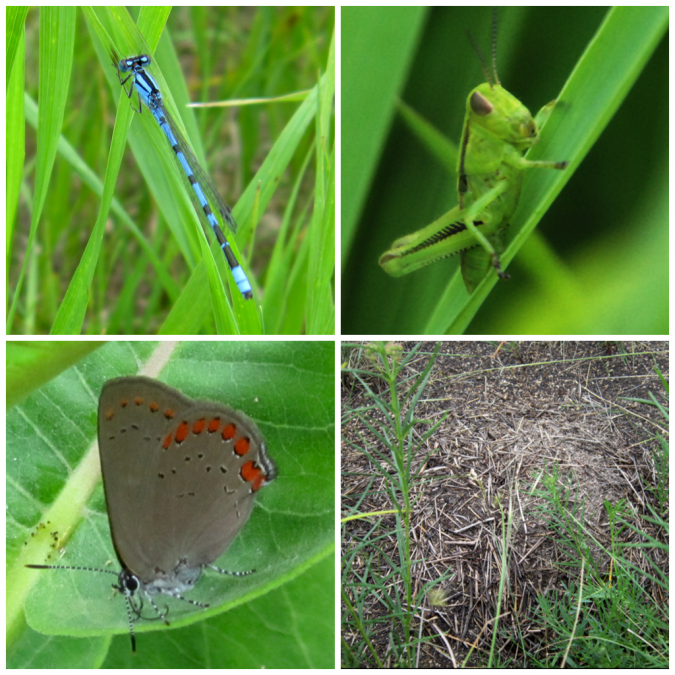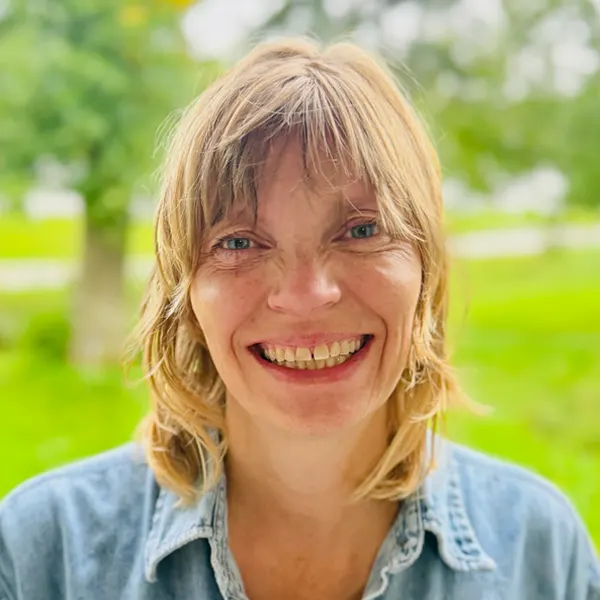On July 12, some 40-50 people gathered in a white tent between Sheep Berry Fen Preserve and managed grazing lands. They had come for the Simon Lake BioBlitz: a day of neighborly connection, nature nerdery, and some good old fashioned fresh air, and they were not disappointed.
After an introduction from Robin Moore, project coordinator of the Chippewa 10% Project, attendees broke themselves up into several groups, each armed with guidebooks, GPS devices, and binoculars and lead by a volunteer Team Leader with special expertise on either plant or bird identification. They set off, either west to the Nature Conservancy’s Sheep Berry Fen Preserve, or east to land managed by a grassfed cattle farmer and quickly began spotting species to identify.
The diversity was remarkable on both sides. The preserve had just been burned that spring, and lush new growth rose from the charred remains. However, grazing may serve a similar purpose, for the farmland was also rich in plant diversity. Several well-seasoned naturalists found species they had never seen before or did not recognize.
Even several of the species that were recognizable were extremely exciting finds: the prairie lily (Lilium philadelphicum) was much talked about at lunch, and I was excited to find leadplant (Amorpha canescens), maybe one of my favorite flowers and often a sign of healthy prairies.
Altogether, volunteers noted dozens of plant animal species, several of which have been entered on iNaturalist.org. Land Stewardship Project will be cataloging species observations on iNaturalist in order to track changes in the area’s prairie ecology. The plan is to thus develop some data that will measure whether or not their work in the Simon Lake area is effective, so we all knew that our time in the field was being put to good use.
At the same time that we did some real scientific surveying using GPS devices and Latin species names, we also enjoyed ourselves. This event proved fun for a variety of people: nature nerds and local land owners alike came out to learn; grey-haired old-timers watched indulgently as children scampered about the boulders. After all, it doesn’t take an expert to appreciate a brilliant blue damselfly, or a huge anthill; all it takes is a little sense of wonder and good company. Tired and happy at the day’s end, the consensus at the tent was, “We totally blitzed that prairie!”
For CURE, co-sponsoring this event with Land Stewardship Project was a great experience. The collaboration allows us to share resources with our partners, reach out to and meet new people, and engage more efficiently and effectively. Continuing to build on our relationships with area allies and partners is critical to our goals, and we are excited about the other great opportunities such shared initiatives will uncover.
Blog post by Ariel Herrod, Watershed Sustainability Program Coordinator. Photos by John White, Peg Furshong, Ariel Herrod and Brian DeVore.

